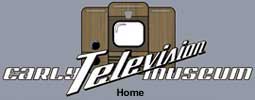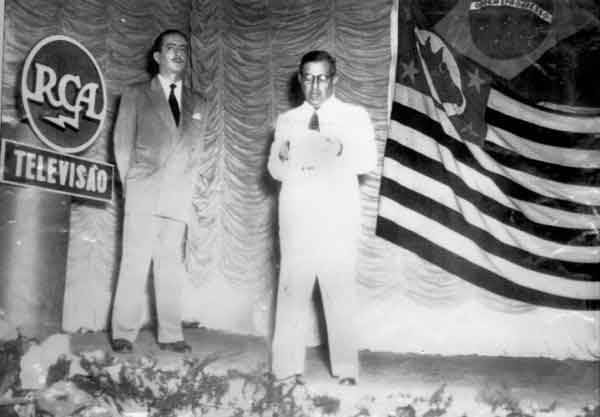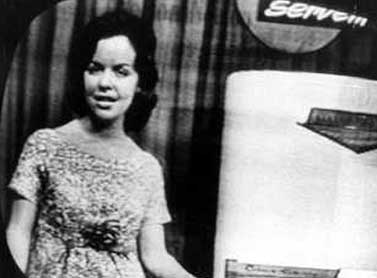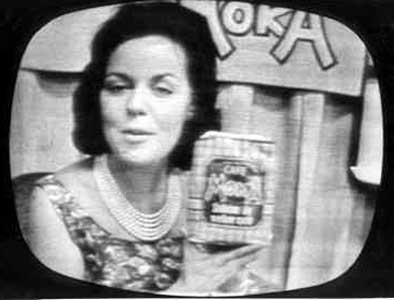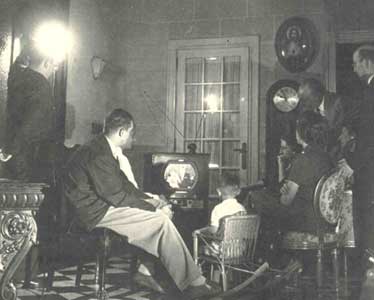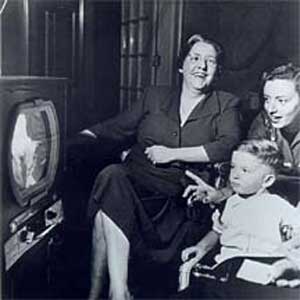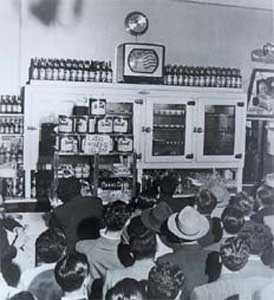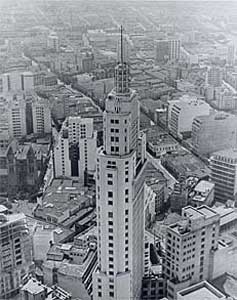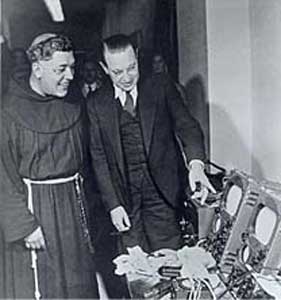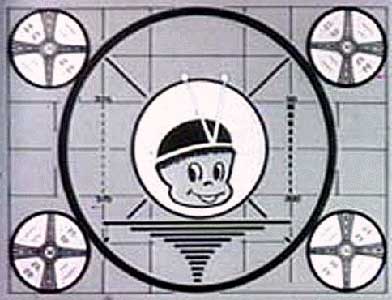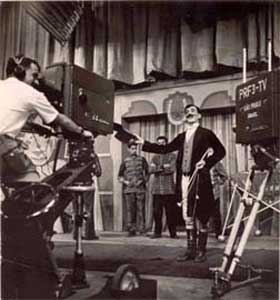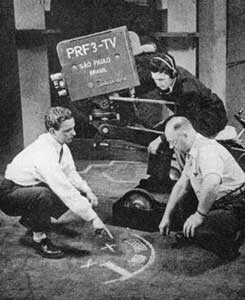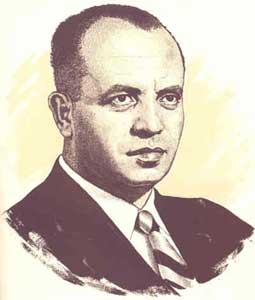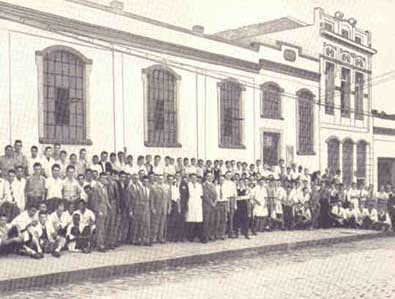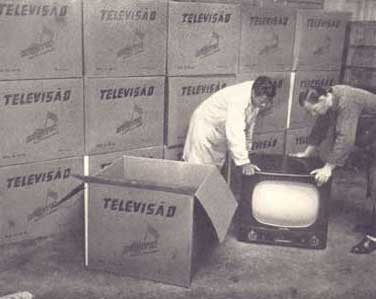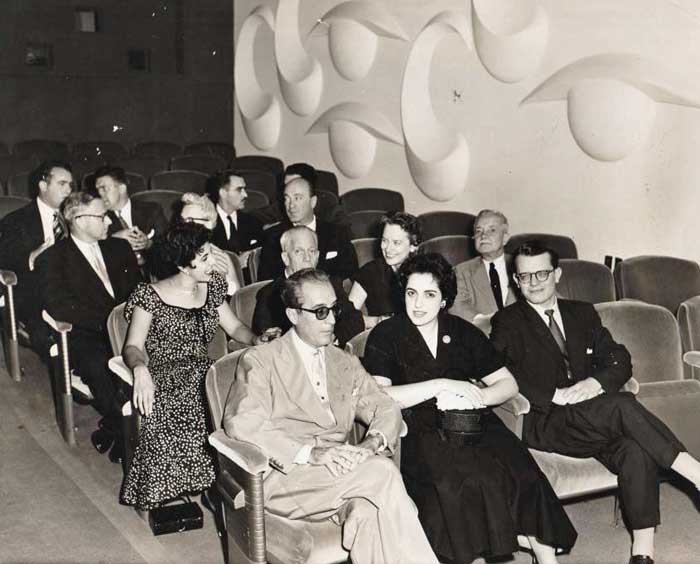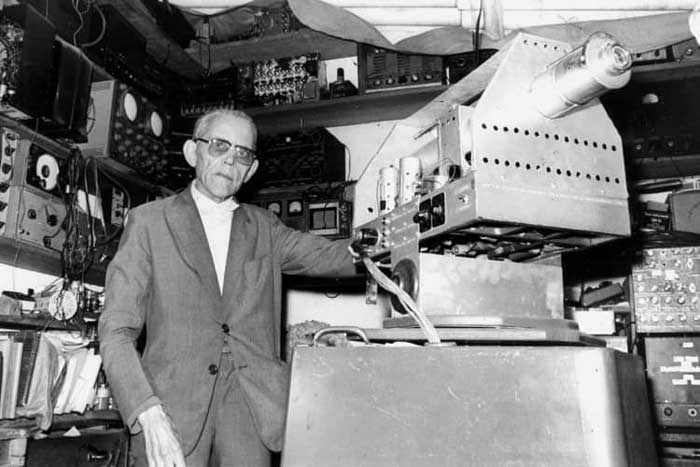Postwar Television Television in BrazilCarlos Alberto Fazano tells us that television technology started in Brazil during the 1939 Exhibition Fair in Rio de Janeiro when Telefunken TV equipment was demonstrated to the general public. His website contains information on the history of radio and television in Brazil. Carlos recently published an article in the Bulletin of the Tube Collectors Association on kinescope manufacturing in Brazil. He has also published a book titled "The Thermionic Age in Brazil. A Historical overview on valves and kinescopes." Here is a history of postwar television in Brazil by Rodrigo Ricardo:
Olavo Bastos Freire, from Minas Gerais, Brazil, with the amateur TV camera he built in 1948 for his experimental TV station. His experiments predated by two years the begining of regular TV broadcasts in Brazil |
